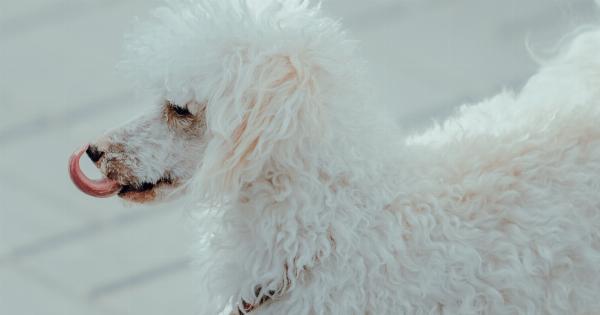As a dog owner, you have probably experienced your furry friend showering you with wet kisses. While at times it may seem like a slobbery gesture of affection, there is much more to a dog’s licking behavior than meets the eye.
Beyond simple displays of love, dogs have various reasons for licking, including some surprising health benefits and hidden messages. In this article, we will explore the fascinating reasons behind why dogs lick.
1. Grooming and Hygiene
Licking plays a vital role in a dog’s grooming routine. Dogs instinctively use their tongues to clean themselves, similar to how cats do.
When a dog licks their fur, it helps remove dirt, debris, and any unwanted pests that may have found their way into their coat. This self-grooming behavior can keep their skin healthy and prevent skin irritations and infections.
2. Cooling Mechanism
Have you noticed your dog licking their paws or other parts of their body after a long walk on a hot day? Dogs lick as a means of cooling themselves down.
When they pant, moisture evaporates from their tongue, which helps regulate their body temperature. Additionally, as they lick their fur, the process of evaporation can help cool their skin and provide relief from the heat.
3. Wound Healing
Believe it or not, a dog’s saliva contains enzymes that aid in wound healing.
Although it may seem counterintuitive due to the bacteria present in their mouths, these enzymes have antimicrobial properties that can help cleanse minor wounds and promote faster healing. Of course, it is always important to seek veterinary care for significant injuries, but a dog’s licking can offer some level of natural healing for minor cuts and scratches.
4. Sign of Submission and Affection
When a dog licks a human or another dog, it can be a sign of submission and affection. Mother dogs use licking as a way to bond with and care for their puppies, and this behavior continues into adulthood.
Licking your face or hands can be your dog’s way of showing love and respect, as they are mimicking the nurturing actions of their mothers.
5. Communication and Social Bonding
Dogs are highly social animals that use body language and vocalizations to communicate. Licking is one form of communication that can convey a range of messages.
For example, dogs may lick each other as a way to establish social hierarchy or to diffuse tension during interactions. Licking can also serve as a way to strengthen the bond between dogs and their human companions.
6. Stress Relief
Licking can have a calming effect on dogs and can serve as a stress-relief mechanism. Similar to how humans may engage in self-soothing behaviors during times of anxiety, dogs may turn to licking as a way to comfort themselves.
This behavior releases endorphins, which can help relax dogs in stressful situations.
7. Sensory Exploration
Dogs experience the world through their senses, and licking is one way they explore and gather information. By licking objects, surfaces, or even people, dogs can obtain valuable sensory input.
The taste, texture, and scent of various things can provide them with essential information about their environment.
8. Showing Trust and Submission
In addition to being a sign of submission, licking can also be an expression of trust. Dogs may lick their owners to show that they feel safe and secure in their presence.
By displaying this vulnerability and placing themselves in a submissive position, dogs are conveying their trust and reliance on their human companions.
9. Attention and Food Solicitation
Dogs are intelligent creatures that quickly learn the connection between their licking behavior and the attention or rewards it brings. They may lick their owners as a means of soliciting attention or to indicate their desire for food.
While it is essential to set boundaries and discourage excessive licking, acknowledging their needs through appropriate responses can reinforce positive behavior.
10. Injured or Irritated Body Parts
Sometimes, dogs may excessively lick a specific area of their body that is injured, irritated, or experiencing discomfort. It could be due to an underlying skin condition, allergies, or an insect bite.
If you notice persistent licking in a localized area, it is crucial to consult with a veterinarian to identify and address the underlying cause.
Understanding the reasons behind why dogs lick is important for building a strong bond with your four-legged friend.
Whether it’s a display of love, a way to communicate, or a means of self-grooming, licking is a multifaceted behavior that serves various purposes in a dog’s life. Embrace your dog’s licks while being mindful of any potential excessive or unusual licking patterns that may require veterinary attention.






























